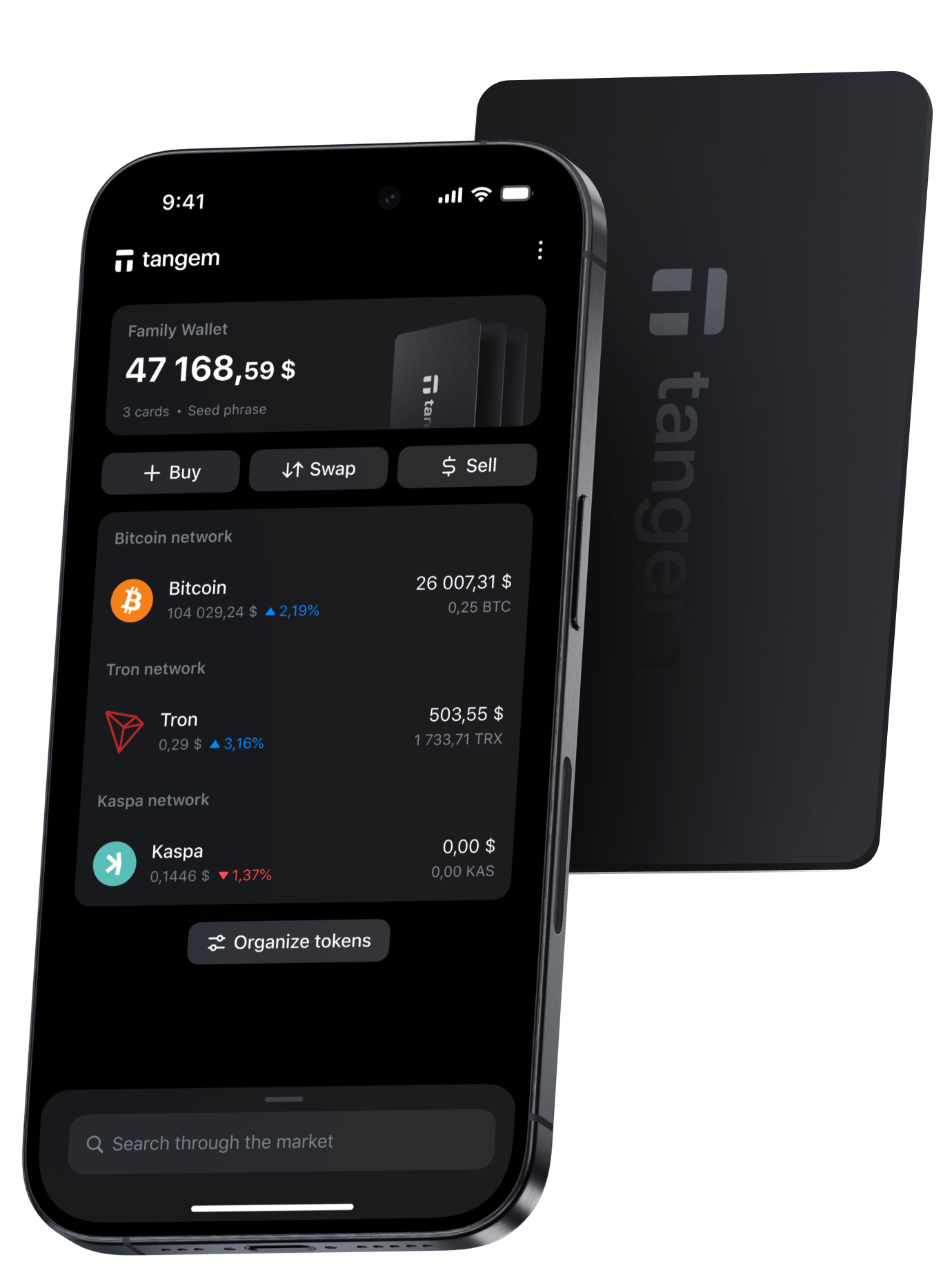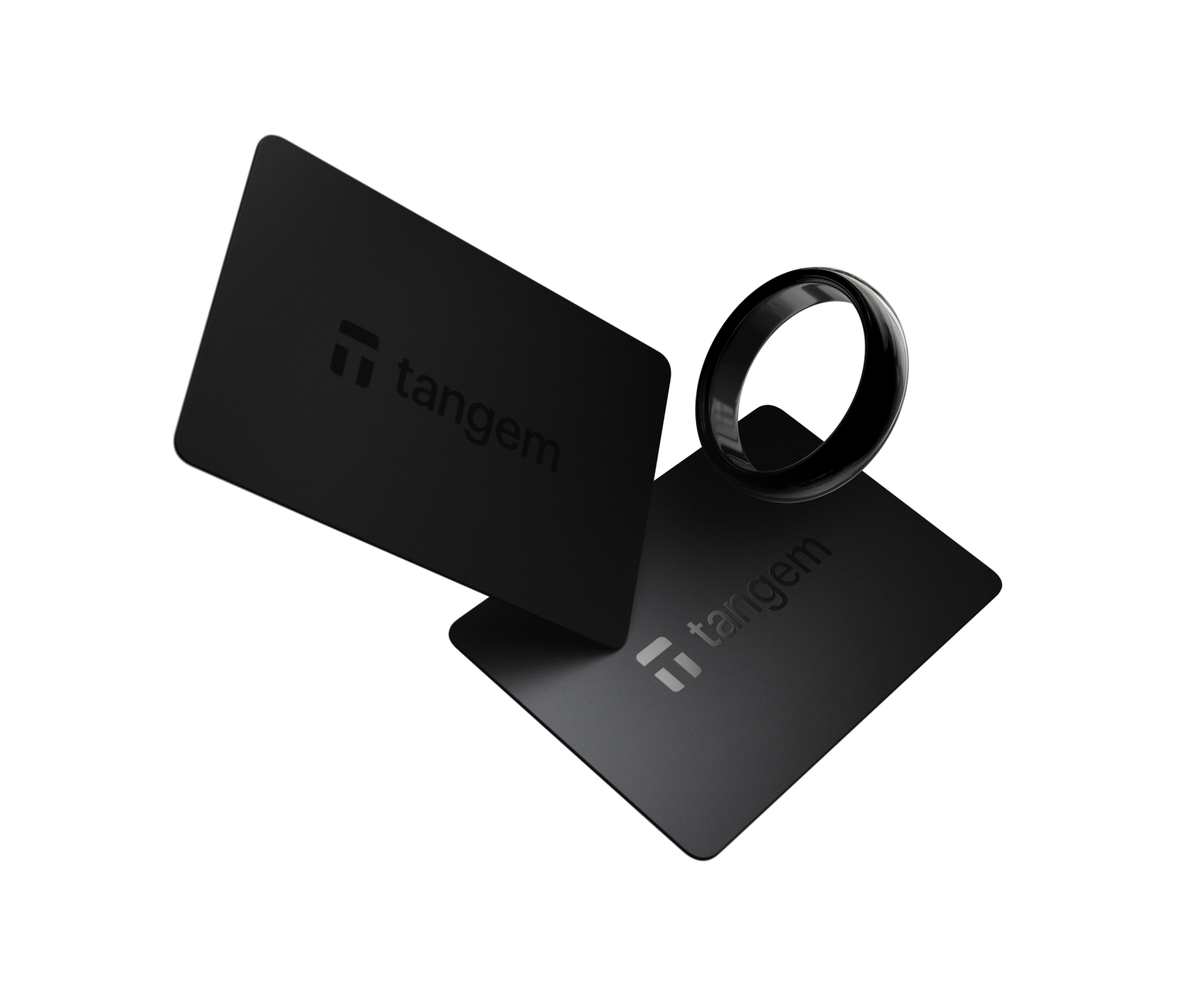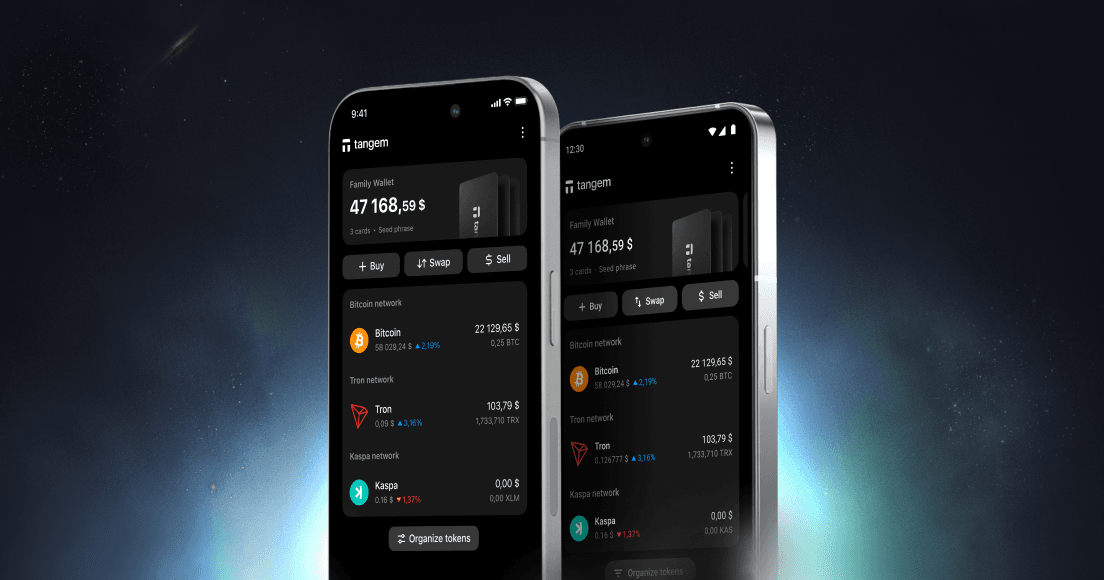
L2 Standard Bridged USDT (Base) wallet
The most secure hardware wallet for your L2 Standard Bridged USDT (Base)
Experience peace of mind with Tangem Wallet, safeguarding your L2 Standard Bridged USDT (Base) in a self-custodial way.

How to secure your L2 Standard Bridged USDT (Base) with Tangem?
When you buy or hold L2 Standard Bridged USDT (Base) in Tangem, it secures your private keys in many ways:
- With the seedless setup and smart backups on extra devices, your Bitcoin is safe and accessible only to you.
- Tangem is IP69K water and dustproof, built to protect against extreme temperatures, EMPs, ESCs, and X-RAYS.
- An access code and biometric authentication protect against unauthorized access.
- Private keys are generated and stored on its EAL6+ CC secure element.
How to get a L2 Standard Bridged USDT (Base) Crypto Wallet?
Tangem products are for everyone, from beginners to experts. They keep your crypto safe and easy to manage. With cutting-edge technology, Tangem lets you control and protect your digital assets.
Get TangemWhy choose L2 Standard Bridged USDT (Base) wallet with Tangem.
What is L2 Standard Bridged USDT (Base) (USDT)?
L2 Standard Bridged USDT Base, often referred to as USDT, is a cryptocurrency integrated into the Base ecosystem, which is a Layer 2 solution built on Ethereum. Designed to enhance on-chain activities for users worldwide, it concentrates on making transactions more accessible and efficient.
What is a USDT Wallet?
A USDT wallet is a tool that stores private keys necessary for managing your USDT address but does not store the cryptocurrency itself. The USDT coins are actually on the blockchain, and the wallet is used to generate and secure the private keys, allowing you to send, receive, and manage your USDT assets.
How does a USDT Wallet work?
USDT wallets utilize pairs of public and private keys to handle blockchain accounts. The private key is essential for accessing a specific USDT account and must be kept confidential, while the public key is shareable to receive USDT. When you wish to send funds, the corresponding private key is needed. Tangem Wallet offers a solution for generating and safeguarding these private keys using its embedded chip.
What are the types of USDT Wallets?
Exchange USDT Wallets:
These are provided by centralized platforms like Coinbase, Binance, and Kraken, which allow the purchase of USDT using regular money. They offer custodial wallets that come with the risk of access being restricted.Software USDT Wallets:
Installed on various devices, these wallets manage private keys and USDT, although they may be susceptible to malware. This category includes mobile, desktop, and browser wallets.Mobile USDT Wallets:
These apps make it easy to manage USDT on smartphones.Desktop USDT Wallets:
Programs set up on computers, storing private keys on their drives, either HDDs or SSDs.Hardware USDT Wallets:
Devices designed to keep USDT safe through offline storage, such as the Tangem wallet, are excellent for minimizing online threats.
How to Choose the Best USDT Wallet
Selecting the ideal wallet is subjective and depends on personal requirements, with an emphasis on ease-of-use, reliability, resilience, and safety. For those prioritizing security and handling significant amounts of USDT, a hardware wallet like Tangem is a highly recommended option.

Tangem supports other cryptocurrencies
Reliability and convenience at your fingertips. Manage thousands of cryptocurrencies with peace of mind anywhere and anytime
See all supported cryptosL2 Standard Bridged USDT (Base) FAQ
- You can buy L2 Standard Bridged USDT (Base) on major cryptocurrency exchanges like Binance, Coinbase, or Kraken. You can also use P2P platforms or specialized exchange services. For safe storage, it is recommended to use a reliable wallet like Tangem.
- For long-term storage of L2 Standard Bridged USDT (Base), a cold wallet such as Tangem is the best choice, offering a high level of security. For active transactions, a hot wallet is more convenient but less protected from hacking.
- Transfer fees for L2 Standard Bridged USDT (Base) depend on the blockchain network load and the exchange or wallet used. Typically, this includes a network fee (gas fee) and possibly additional fees from the platform.
- To create a wallet for L2 Standard Bridged USDT (Base), install the Tangem app, follow the instructions to set up a cold wallet, and generate a unique address for storing your cryptocurrency.
- L2 Business ModelThe business model of blockchains, both layer 1 and layer 2, is tosell blockspace. Regarding layer 2 blockchains, transaction sequencers collect fees from users and then use part of these revenues to pay for cryptographic proof and data availability at layer 1.
- A measure of a cryptocurrency trading volume across all tracked platforms in the last 24 hours. This is tracked on a rolling 24-hour basis with no open/closing times. The amount of coins that are circulating in the market and are tradeable by the public.
- They work byoffloading a significant portion of computational work from the main blockchain (Layer 1) to secondary networks. L2 solutions process transactions off-chain and then batch them together for settlement on the base layer, enabling faster and cheaper transactions.

Something went wrong
🎉 You've unlocked 15% OFF!
Use 15OFFRING — valid for Tangem Ring till 30/09/2025 | Tap & Get

